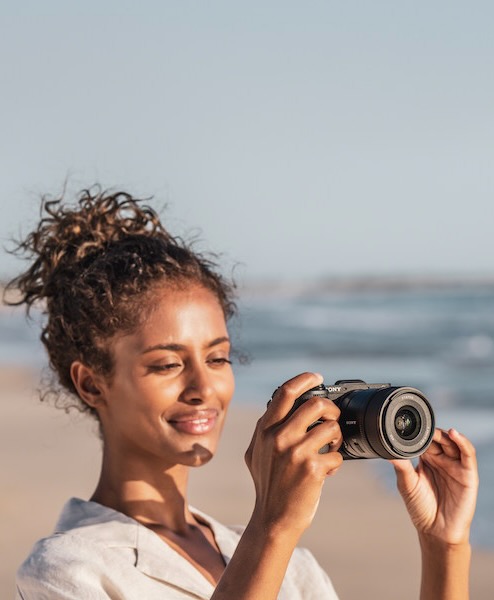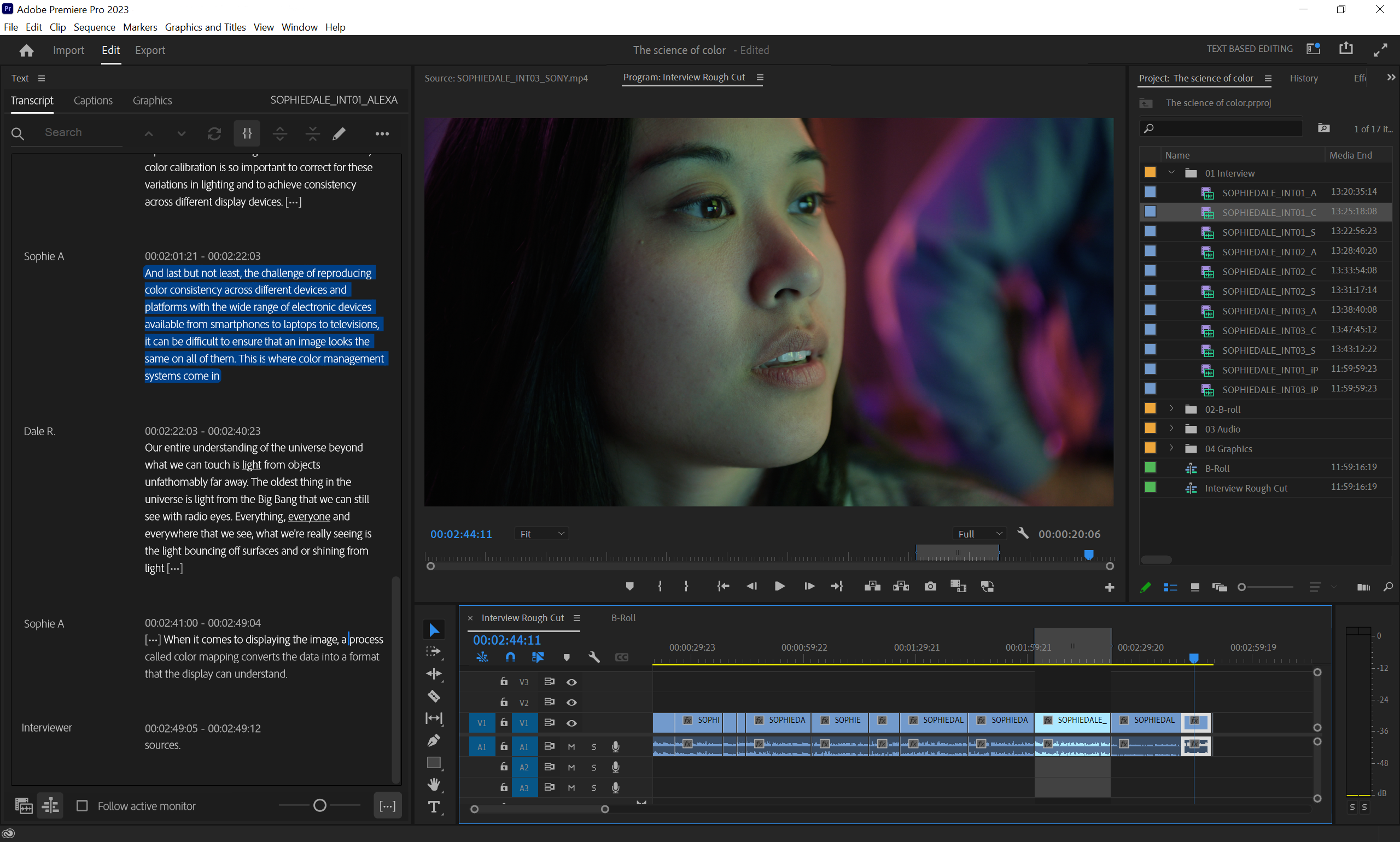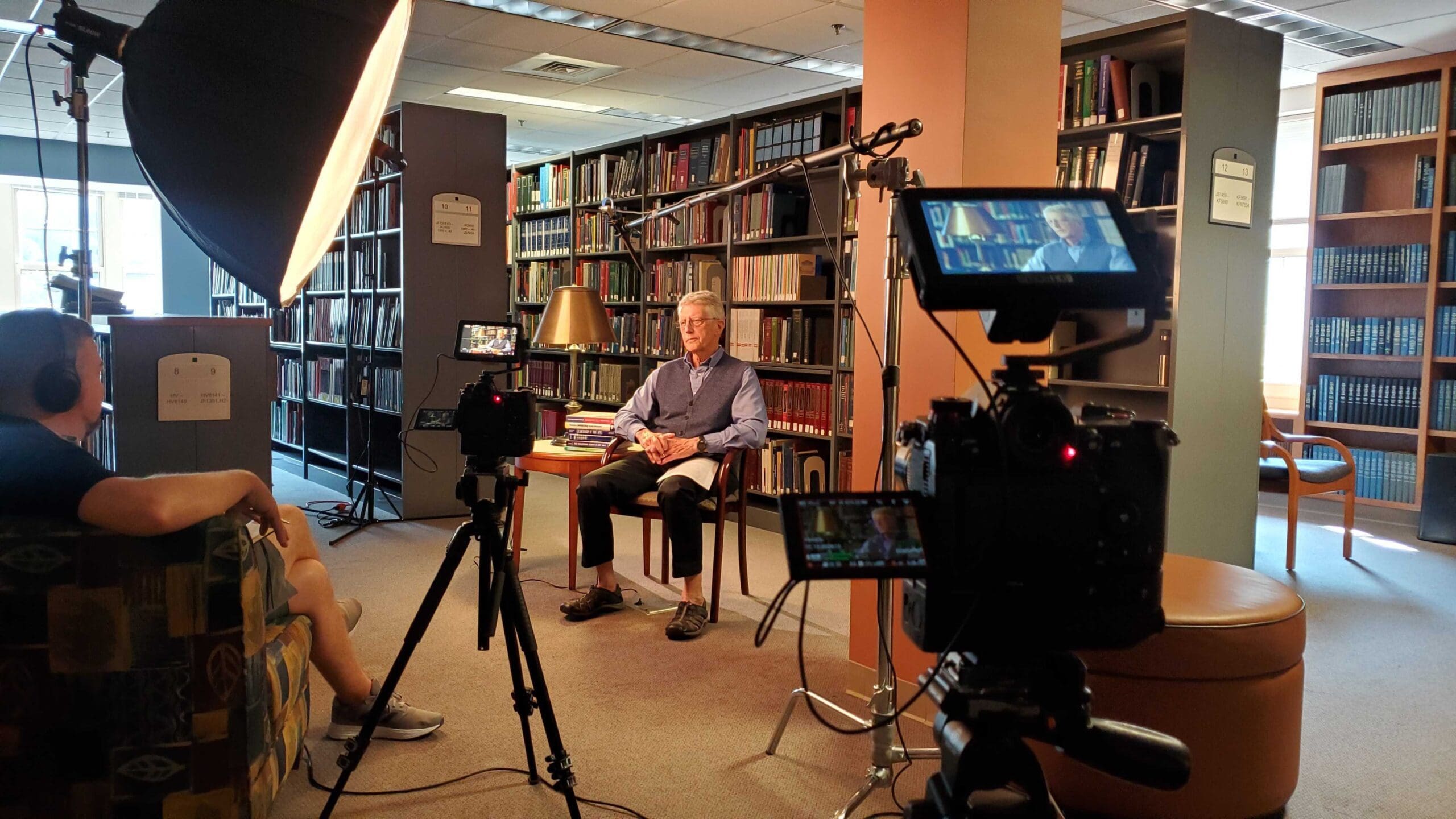Moving Toward Motion
May 22, 2013
Being at WPPI and seeing new products on display got us thinking about the future of photography. One interesting trend that has caught our attention as of late is the concept of “cinephotography”—that as yet undefined hybrid of still photography and video made possible by high-resolution video cameras that allow for the extraction of still images from video—now up to 5K (that’s 5,000 pixels wide).
So is the end product more about the art of video, the art of photography or the art of a good editor? And how do we regard these changes in the industry? We’ll be following this topic in an upcoming series of articles, but first up, we spoke to two wedding imaging companies—New York City-based Sunday Morning Films and Kansas City, Missouri-based One Tree Weddings—to find out which trends they are seeing in the world of motion—and their advice to photographers moving into the craft.
Trends In Wedding Video
As technology renders wedding videography not just a haute commodity but a must-have addition to wedding packages, and DSLR video capabilities have become a staple of still photographers’ gear, there is no better time than the present for photographers to consider how video can play a part in their business models.
Today’s videographers are not just showing up on the day of the wedding; they’re taking filmmaking a step further to create lasting layers to the Big Day by creating short-form wedding documentaries. Think “When Harry Met Sally”-style interviews of the bride-and groom-to-be who separately relay memories of everything from their first meeting, to their first fight to the moment they decided they would head down the path to matrimony. These interviews are layered with scenes from the wedding ceremony and pre-wedding soirees—all in tight three-to five-minute packages.
This is only one popular style for wedding videos today, in a market that’s constantly evolving. Jenn Chambers, of Sunday Morning Films—a wedding film business she formed with her husband in 2009—says she’s seen “same-day edits” gain popularity, and that “scripted feature films are now on the rise.” The companies creating these films are going far beyond the short-form documentary to create high-production feature-length films, complete with movie posters, where the couple become stars in the story of their romance. Her company specializes in the short-form documentary—a process she says begins with a pre-production meeting with the couple to break down barriers, then “conversations on film” the day before the wedding, and ends with herself and a small crew attending the whole day of the wedding. The final film is usually delivered between three and six months after the wedding, but, she says, the relationships she maintains with the couples tend to last much longer.
Format aside, Chambers says, “the wedding video has been redefined recently and the one thing that will stick around is that our couples want quality. The amazing advances in technology that we have seen in the ‘video world’ have now allowed the wedding cinematographer to offer that quality, and in turn allowed [us] to focus on storytelling and less on the equipment. I think of the short-form documentary style as less of a trend and more of a great step in our industry.”
Michael Ransdell, filmmaker and co-owner of One Tree Films (which also produces similar short-form documentaries), says that nowadays many brides are looking for their unique stories to be told through motion in an artistic way. “As far as trends go on the video side, I’m hearing from more and more brides who are starting to get it—starting to understand that we are really trying to tell a unique story for them and not just a cookie-cutter music video. We don’t want [the bride] to feel like we could replace her with another girl in a white dress and plop her into the film. The better we know [the couple], the stronger we will understand their story.”
Creating a Signature Cinematic Style
Like Ransdell’s documentaries, Chambers says the films she and her husband create are all about “story, story, story.” She says this is the common thread in all of her filmmaking assignments—whether wedding, corporate promotional videos, or in her full-time production job at ABC News. “Who is this couple? What makes them different from our other couples? What will their grandkids want to see in this film and know about them years down the road?” Chambers says are questions they ask before telling a couple’s story. “Every wedding has a wedding dress, every wedding has a wedding cake, every wedding has a certain amount of cookie-cutter elements (no matter how hard the couple tries to make their wedding unique). And yes, all of this stuff is important. We do want to make sure we get a beautifully composed shot of the dress into their film; but more importantly, we want to capture their story: How they met, the proposal, the mistakes, the rescues and everything that makes up their love story. That is the stuff I would want to see in my grandparents’ wedding film and that is the stuff I want to be able to share with my daughter when she grows up. Stories are so priceless and should be captured as a gift to future generations.”
Matt Frye, co-owner and still photographer for One Tree Weddings, notes their company’s approach to wedding videos stems from both his and Ransdell’s backgrounds in journalism. “We like to push our boundaries as artists, and our goal is to create beautiful, timeless imagery. We’re lucky in that we attract clients that appreciate fine art and are more than willing to place artistic control in our hands. We’re seeing a genuine attraction to what we call raw art. Our couples don’t want fake imagery with cheesy posing; they want the real moments, the true emotions of their wedding day documented in an artistic way.”
Combining Still and Motion
Another aspect for still photographers [and videographers] to consider is whether to partner with other creatives. Chambers says at this time it doesn’t make sense to change their current business model to partner with one photographer. “We are often recommended to couples by our photographer pals, and when we are booked first we do the same for them,” she says. “We have such respect for so many of the photographers that we have worked with and would be honored to partner with them—but why screw up a good thing?”
Frye’s and Ransdell’s approach is slightly different since they are a photographer and videographer team, respectively. “Matt and I work separately with our teams. He is usually working with a second shooter. I’m usually working with an assistant and my wife, who works as a grip and then shoots, once we get set up at each location. If Matt isn’t booked, then sometimes he’ll second-shoot video for me. Other than that, we really don’t cross over,” Ransdell explains. He goes on to note, “I think we both have an amazing amount of respect for what the other one does and the art that goes into it. The beauty of our situation is that there’s never any conflict over shots at our weddings. We call it a dance; we dance around each other. We tend to know where the other will be at any given time. We are rarely in each others’ shot. We find when working weddings with other vendors, while everyone is nice and for the most part respectful of the other, ultimately they are looking out for their own shots. Not the case with us—we are a team trying to tell the best possible story in photos and film.”
The Psychology of Cinephotograhy: The Microexpression
Perhaps the best argument in favor of abandoning still photography for culling stills from video is the theory of the microexpression (or subtleties in human expression), studied by psychologist Paul Ekman, in part to teach law enforcement how to detect lies during interrogation. From this theory we can discern that in between clicks of the shutter we lose out on minute details in the face that convey the true demeanor of an individual.
Abraham Joffe, a cinematographer for the Australian-based Untitled Film Works became interested in Ekman’s theory of expression and wanted to find out how 4K and 5K video technology could change the nature of the still photograph and cinematography, so he began working on the “Micro Expressions Project” (the film can be seen at vimeo.com/56241602). To begin this project, he invited other photographers, including portrait photographer Sue Bryce, to test the new Canon 1DC camera in various shooting environments—including weddings and studio portraits—and then he invited other industry professionals to meet to talk about the printed 4K images coming from the DSLR camera.
It’s this capacity to study the most authentic moment of an expression in a person’s face and then extract it from moving footage, that could revolutionize the industry. While many agree the images may not yet be a substitute for the click of the shutter until technology allows for extracting RAW images from video footage, the ability to extract high-res stills from video could be very useful to wedding and portrait photographers whose success depends on the ability to capture authentic expression.
Joffe spoke to me about his thoughts on these technological innovations:
Lindsay Comstock: How do you think being able to pull 4K and 5K still images from video cameras will impact the photography industry?
Abraham Joffe: Image capture is at the beginning of an exciting new [time]. Motion-acquired still photography isn’t a new concept, but we are finally starting to see the quality get to a point where useful images can be recorded this way. Cameras like the EPIC and SCARLETT, from digital cinema producer RED, have been able to offer this capture for some time now, but with new cameras entering the market like the 1DC from Canon, we will only see more. Firstly, I should say that this not a replacement for traditional photography techniques, but simply another tool photographers can turn to. Photographic images are captured through so many processes, and motion image capture is just another. 4K and 5K resolution video has been the new standard that has seen useful stills. 4K produces an image of approximately 8.8 megapixels and 5K resolution offers 13.8 megapixels.
LC: Will it further blur the line between photographers and videographers?
AJ: Perhaps, but like forever, the skill and art of great photography (or cinematography) is still required to produce a pleasing result. We may see more photographers exploring the moving image and some cinematographers extract still images from their films. What should be noted, though, is that the headspace of the two mediums is quite different so it’s very hard to shoot with both in mind. I think with the increasing options for digital delivery, we will certainly see more fusion work being produced.
LC: What types of shoots is this technology best suited to? Why?
AJ: Motion blur is the biggest obstacle from pulling sharp still frames from motion. Unlike when shooting stills, the shutter with digital cinema cameras is electronic. With the 1DC, we still found motion blur when shooting fast action at very high frame rates. So sports and fast action, at least for now, won’t be the ideal shooting environments for still extraction. Having said that, there were still many useable frames, just not 24FPS that were useable. For slower-moving subjects like in the portrait and wedding shoots, we found nearly all the frames were useable, so the options for choosing the “perfect” image were high. Digital cinema cameras like RED’s Epic and Scarlett provide 4K + 5K RAW imagery, unlike Canon’s 1DC that shoots a stream of 8-bit motion-JPEGS. So when shooting with the 1DC, we found we really needed to nail our exposure and white balance to achieve desirable results. As we were shooting JPEG, we just didn’t have the latitude we would have if we had been shooting RAW.
LC: From your talks with photographers, are they impressed by the quality of the still images that are coming from these cameras?
AJ: If you do nail your exposure, and of course importantly focus, then the images we acquired from the motion using the 1DC were amazing. Incredibly sharp, detailed images that held together well, even printing at 20 to 30 inches. The photographers interviewed here in Sydney as part of the “Micro Expressions” project were all very impressed with our results. The photographers included: Sue Bryce, Graham Monro, David Stowe, Ryan Schembri, Michael Martin and Phillip Bloom.
LC: Do you think it will change the way we think about photography? Can we even call it photography?
AJ: As this technology continues to evolve, I think we’ll definitely see a change in the public’s perception of where images come from. I don’t think it will matter so much how the image was acquired, but what is the content of the image. Just look at how traditional journalism has evolved—we now see content originate from personal blogs and social media. Great writing is still great writing, regardless of where it originated.
Strangely, if this motion image capture wasn’t called “stills from video,” I think it would get a different response from people. If instead it was called “burst mode,” where you get 24 8.8 megapixel JPEGS per second, I think it would be seen differently. If photography is the process of capturing light and reproducing the moment, then this is just another way of getting to that moment.
LC: What do the photographers you’ve spoken to say? Are they concerned?
AJ: I think photographers should see this as simply another pathway to an image. I don’t see it being something that should threaten their livelihoods. The amount of data amassed to capture that “one decisive frame” is mind-bending at first. The 1DC shoots at a data rate that requires four gigabytes per minute of video! I think there needs to be purpose to go there as a photographer. On the other hand, if someone is filming a project in 4K resolution as the format, then still images that are in a way the by-product of the shoot are a bonus.
LC: Why is your company so interested in this topic?
AJ: It was truly an experimental project that we thought fascinating to explore. For now our company won’t be offering photography (we have always specialized in cinematography), but we may revisit the topic in the near future. We are shooting a number of projects in the near future in 4K resolution, including a project to be shot in the Arctic this August, and a number of trips [scheduled for] Africa in September and in 2014. I’ll be certainly looking to extract some quality stills from the footage we capture. As the cost of high-resolution video cameras comes down, I think more producers will explore this fusion image capture.
LC: And how did photographers respond?
AJ: There’s been a lot of interest, but also some trepidation on spending the money required for this new technology. However, there was fairly universal positive feedback on the “Micro Expressions” project itself.
LC: What can photographers learn from Ekman and the microexpression to be better image makers?
AJ: I think the age-old saying lives on: It’s not about the gear.
Whatever technology is available, it still comes down to the abilities of the image maker. It’s up to their eye to craft or harness the light and subject to best tell the story.
Tips: From Still to Motion
1. Take the Craft Seriously
“I’ve been in film production now for over ten years and I am still learning everyday. Yes, the crafts do overlap at times, but they are still two separate skills that must be mastered. In the end, if you are just trying to improve your bottom line, the final film or photographs are going to suffer.”
—Jenn Chambers
2. Understand Audio
“I started my career in television and film production where we mostly focused on the visual, but after switching my career to the post-production side I realized that the sound is much more important. I quickly learned that I would rather have a mediocre visual with amazing sound anytime!”
—Jenn Chambers
“Collecting audio is the cornerstone of any great film. Ignoring sound design or doing a poor job of capturing audio will be the first sign of a half-hearted project.”
—Michael Ransdell
3. Learn to Love Editing
“You really have to love to edit because that’s where most of your time will be spent (unless you’re in a position to hire an editor). That’s where I really fell in love with filmmaking: being able to see that story develop while you’re shooting it, then seeing all those pieces come to life on the timeline is so rewarding.”
—Michael Ransdell
4. Let The story lead:
“Allow the story to dictate the technical. I think this rings true for photography also though. We get so excited to use our new piece of equipment or a rock star lens, but sometimes the story doesn’t call for it.”
—Jenn Chambers
5. Budget for gear
“I was never a ‘gear head’ until I got into video. Now, it seems like there’s always another tripod, stabilizer or gadget I need to make this one little aspect of the film better. It never seems to end.”
—Michael Ransdell
Log on to Rangefinderonline.com to see samples of Sunday Morning Films’ and One Tree Weddings’ videos.




